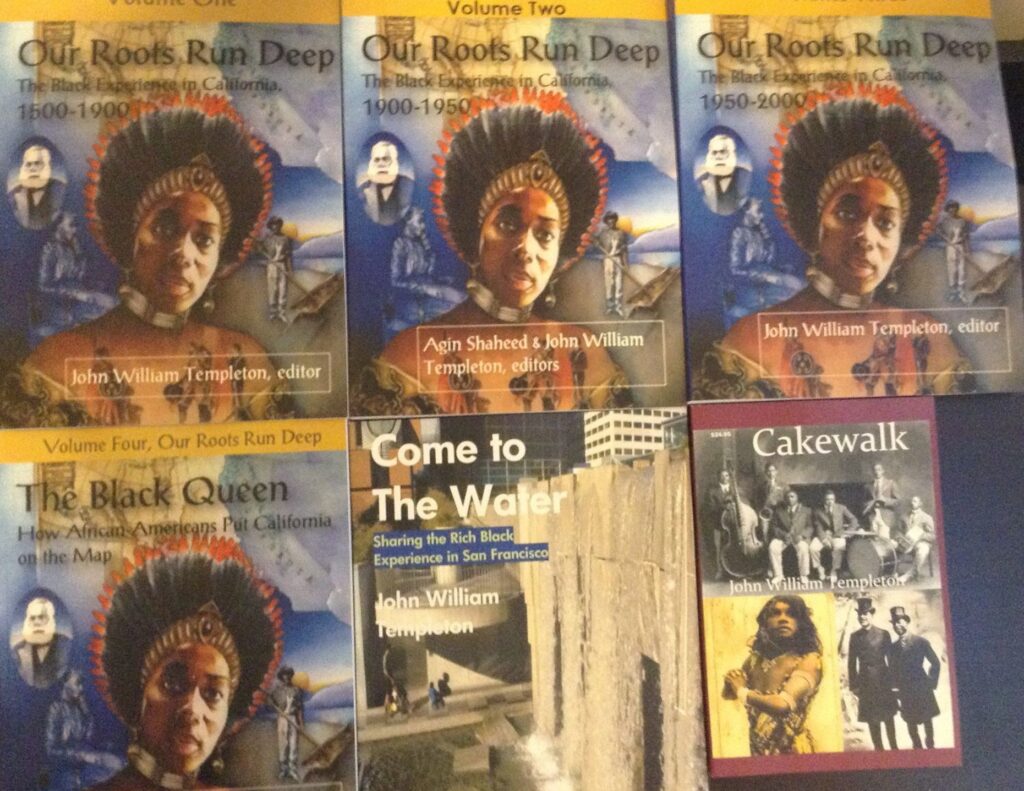
The right to vote was the top priority for California African-Americans in 1851
In 1846, the last two jefe politicos of Alta California were the African descended Pio and Andres Pico and the top American diplomat was Virgin Islands native Capt. William Alexander Leidesdorff.
But after California statehood, slavery sympathizers flooded the state and took over the legislature, passing 1851 laws banning the right to testify against whites in court and the right to vote from “Negros, Orientals and Indians.”
The creation of the Franchise League in 1851 was the beginning of the Underground Railroad on the West Coast and their advocacy as part of the nationwide Loyal League, also started in 1851, would lead to the passage of the 15th Amendment in 1870. One of the side stories of the passage of the 15th Amendment is the development of jazz music in 1869 as a political strategy.
We Fought, We Vote: 150th anniversary of the 15th Amendment is the first textbook designed to tell the legislative history of the premiere political accomplishment of 19th century African-Americans, the foundation of the voting rights for all Americans.
The book is a companion to the 30-part instructional series on ReUNION: Education-Arts-Heritage beginning October 15. See reunionnetwork.info to subscribe your school today.

The foundation of modern America
The issue of who belongs in America begins with an understanding of the most important section of the U.S. Constitution — the underpinning of our legal system and economy — the 14th Amendment.
John William Templeton, here speaking at the bicentennial of the Frederick Douglass birthday at the African-American Civil War Museum in Washington, D.C., researched every state resolution of adoption of the 14th Amendment and the entire testimony of the Joint Committee on Reconstruction in 11 volumes to condense how the greatest example of democracy in global history occurred just a decade after the Supreme Court issued the Dred Scott decision.
The 14th Amendment is directly the result of 90 percent voting turnouts by the freedmen, many of them veterans of the U.S. Troops of African Descent who were acknowledged by a grateful nation as the deciding factor in the Civil War which preserved the United States.
Equal protection of the law is designed to protect those new citizens from the organized violence of the Memphis and New Orleans riots and from unfair labor contracts documented during those hearings.
But the amendment also includes the full faith and credit clause which is the underpinning of the financial system, including our bond markets, and the resource which allowed expansion across the continent and prosecution of two World Wars.
All students should understand the centrality of the Black experience in America through this amendment, as we show in a 30-part instructional series beginning Oct. 15 with this companion book

Have you heard of Esteban Gomez?
The three largest American cities all have African-American explorers who were the first to visit those locations. The first offices of the federal government were in a Black-owned business, which is the oldest building in New York City.
Road to Ratification: How 27 States Faced the Most Challenging Issue in American History provides the fact base for understanding how this nation resolved the issue of slavery in the 1860s–obviating the need to argue about it now.
For each of the 27 states that ratified the 13th Amendment, the most important event in African-American history, within nine months, Road to Ratification goes back to the first African to set foot in that jurisdiction and shows how the development of institutions such as Free African Schools, Black churches, lodges and military formations pushed American democracy to the logical conclusion that slavery and freedom could not coexist.
Templeton’s journey started in 2007 with an assignment to interpret the California adoption of the 13th Amendment, found in a closet at the Historic State Capitol. He would find the similar resolutions at all 27 states. In most cases, he was the first person to ever ask for the document.
In the process, Road to Ratification shows how each individual state legislature embraced what was called “the second American Revolution, with 18 states ratifying in the month of February 1865, just weeks after the most important speech in African-American history, Let The Monster Perish, by Rev. Henry Highland Garnet.
This is the context which allows the nation to remember the conclusion it has already arrived at.


